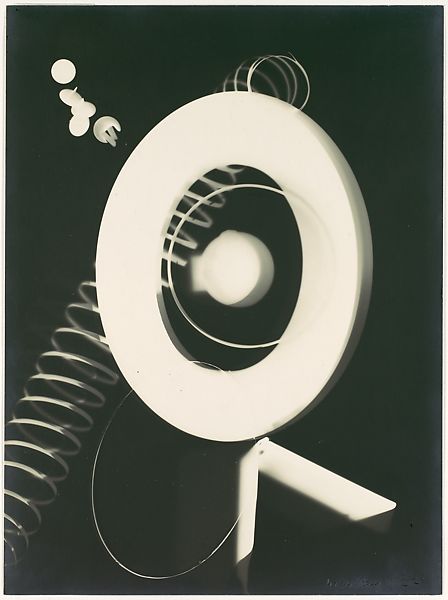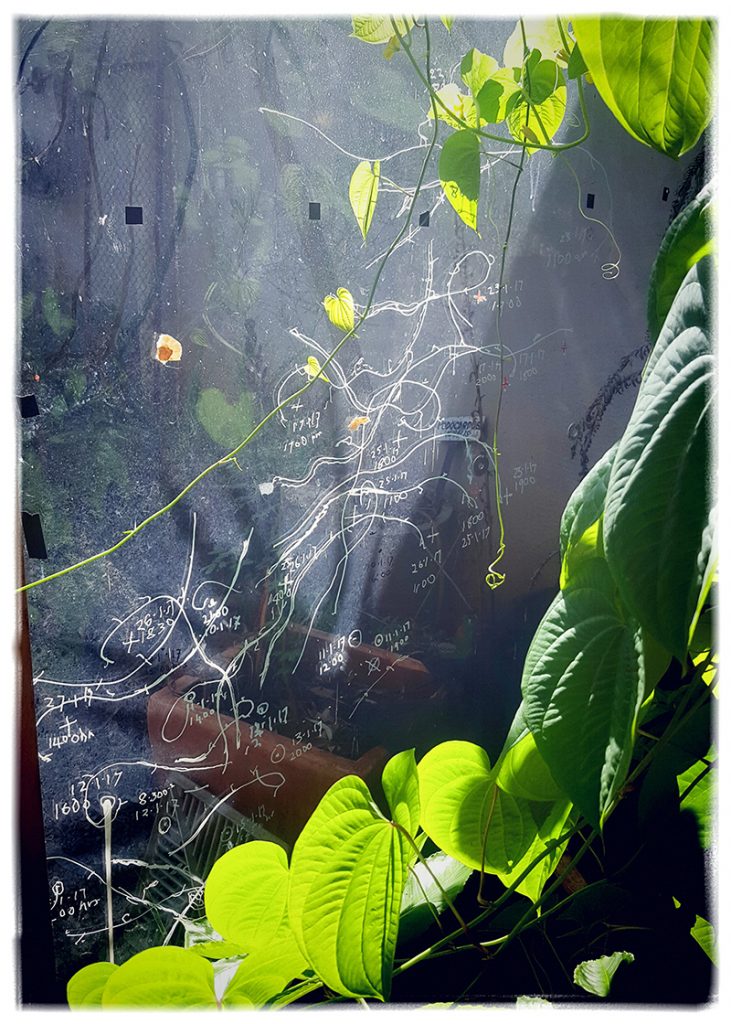03 Jun Index
Figure 1: Man Ray (1922) Rayograph. Gelatin silver print. 23.9×17.8cm. New York: The Metropolitan Museum,
Figure 2: Own image (2017) taken in John Wolseley’s studio.
A footprint left by a foot, a rayograph of projected light on thumbtacks and wire (Figure 1), the shadow of a climbing vine across a window (Figure 2). The concept of an index as a sign is explored by Peirce (Goudge, 1965), who provides a series of defining characteristics[1]. The characteristic of most relevance to my project, is the assertion of an index as a sign having a direct physical connection to its object.
This project creates artefacts that explore my direct experience with and connection to, the cypress tree outside my window as a landscape. The drawings, photographs, paintings, frottage, videos, etc. document my experience – the shadows of the tree are traced, ink is distilled from the leaves and used to document views through its branches, the bark is frottaged, the cones used to mark the paper. These artefacts are indexes, as described in Krauss’s essay ‘Notes on the Index: Seventies Art in America’.Traces, imprints and clues; physical manifestations of a cause – the object which they signify.
As discussed by Goudge (1965, p55) however, perhaps the relationship between an object and its index is not always physical. A more apt definition might then be that an index is a sign with a direct connection to the object that is represents. The physical impressions are not the only traces that remain, for as I return to the same landscape with slightly shifting perspectives, memories and stories imprint themselves onto me as I in turn impress them back on and into the tree.
I am sitting, staring at the dense, dark foliage that blocks out my sun when a green rosella, sleek and vivid, darts into the tree. The experience leaves an impression, an index. The tree appears now lighter, not encroaching on me, but cocooning a bird. My view of the tree as a haven might be an index of the bird disappearing into its branches.
[1] (1) An index has a direct physical connection with its object, or is really affected by that object, and the interpreting mind has nothing to do with this connection except to take note of it. (2) An index exerts a compulsive influence on its interpreter, forcing him to attend to the indicated object. (3) An index involves the existence of its object, so that they form an inseparable pair. (4) The object is always an individual entity. (5) An index asserts nothing but only shows its object. (6) It also shows the relation between itself and its object to be a non-rational relation, a brute fact or Secondness.” (Goudge, p. 53)
References
Goudge, T. A., Peirce (1965) Index. Transactions of the Charles S. Peirce Society (1)(2) pp. 52-70 Indiana: Indiana University Press Stable. Retrieved from: https://www.jstor.org/stable/40319509





No Comments